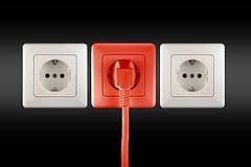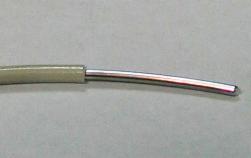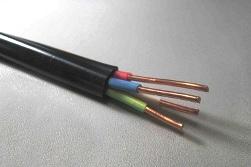Categories: Featured Articles » Novice electricians
Number of views: 254,975
Comments on the article: 31
Why can not the aluminum cable be used in electrical wiring?
 Why is aluminum gradually removed from everyday life when installing electrical installations? Why is he bad and dangerous?
Why is aluminum gradually removed from everyday life when installing electrical installations? Why is he bad and dangerous?
According to the requirements of the 7th edition of the Electrical Installation Rules (PUE), aluminum wires and cables with a cross section of less than 16 square meters. mm are not allowed for use during installation. But what is the reason for this? Why is aluminum so bad that has served the electricians faithfully for many years?
To answer these questions, you need to recall something from physics and a bit from the school chemistry course. What properties does aluminum have as a material?
First of all, it is, of course, light. This is an undeniable advantage: it is more convenient to roll out a bay or reel with a light cable, and if it comes to the installation of power lines, then lightness at all becomes a most valuable quality.
But, in addition, aluminum as a conductor, in comparison with copper, has a higher electrical resistivity - 0.0271 Ohm x sq. mm / m vs 0.0175 Ohm x sq. mm / m The difference is almost twice!
 It is the high resistivity that negates the advantage of the lightness of aluminum. It turns out that in order to provide the same conductivity, you will have to take a much more powerful, and, therefore, heavy aluminum conductor than if we used copper.
It is the high resistivity that negates the advantage of the lightness of aluminum. It turns out that in order to provide the same conductivity, you will have to take a much more powerful, and, therefore, heavy aluminum conductor than if we used copper.
But this is still half the trouble. Just think - the copper conductor will be thinner! If you select the cross section correctly, then use aluminum for health, especially since it is also much cheaper than copper. But not so simple.
Everyone knows that aluminum is a corrosion-resistant metal. But from the chemistry course it is known that this is not entirely true. Aluminum itself oxidizes very quickly in air. But the formed thin film of oxide and protects it from further chemical destruction.
But the protective film already has slightly different properties than the metal itself. In particular, the conductor from it is no longer so good. This means that in the place of electrical contact with the aluminum oxide film, increased transient resistance. And this leads to heating of the contact, which in turn leads to an even greater increase in electrical resistance.
 Here is such a vicious circle. The result is molten contacts, open circuit or unreliable power supply. It is necessary to look for a problematic contact, tighten it, or change the clamps, and aluminum subjected to prolonged heating, which already does not have special plasticity, can break off from any careless movement. Then it will be required cable replacement, which is technologically not always possible.
Here is such a vicious circle. The result is molten contacts, open circuit or unreliable power supply. It is necessary to look for a problematic contact, tighten it, or change the clamps, and aluminum subjected to prolonged heating, which already does not have special plasticity, can break off from any careless movement. Then it will be required cable replacement, which is technologically not always possible.
With copper, such unpleasant stories do not occur, therefore, the latest edition of the PUE and recommends it for use in the installation of cable lines of small sections. As for powerful conductors, a cross section of 16 square meters. mm and more, here aluminum is allowed for use only for reasons of economy. Still, copper is much more expensive, and so far it is impossible to switch exclusively to copper wires and cables.
Alexander Molokov
We recommend reading:How to choose the right cable cross section for wiring
Details about choosing the brand of cable and wire:Which wires are best used for wiring in an apartment
See also at e.imadeself.com
:
